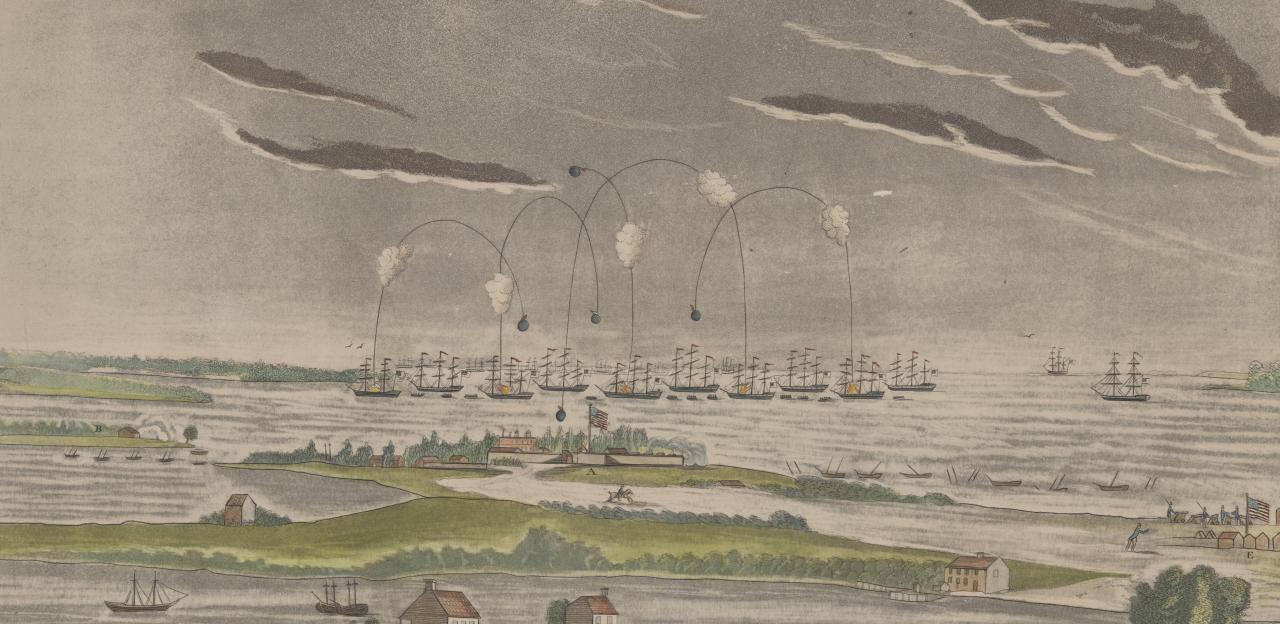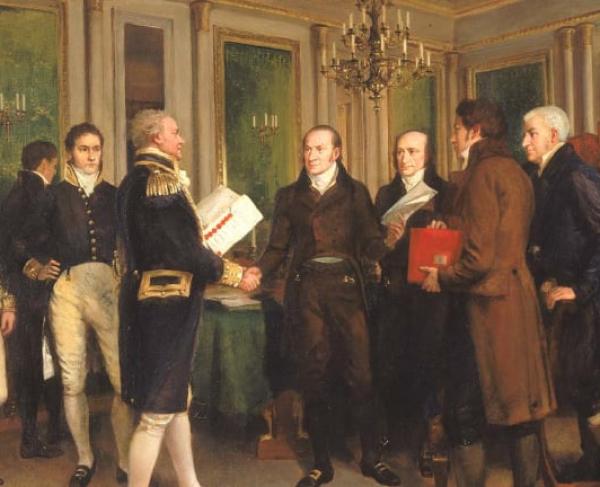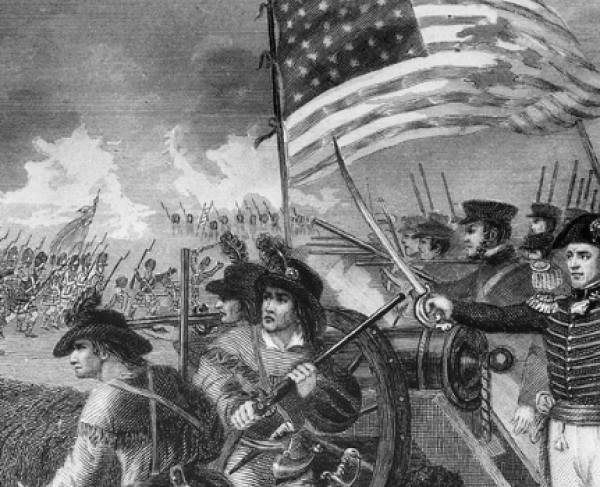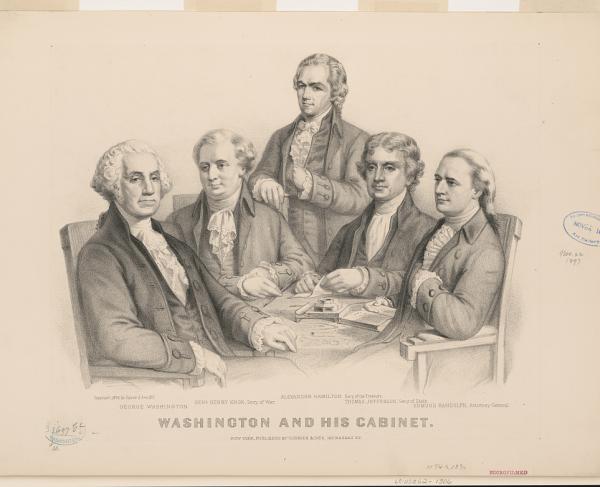Battle of Fort McHenry

Encouraged by their victory at Bladensburg on August 24, 1814, and subsequent burning of Washington, D.C., the British turned north, intent on capturing the major port city of Baltimore, Maryland. Militarily, Baltimore was a far more important city than Washington because of its thriving port and strategic location. The British hoped the loss of both Washington and Baltimore would cripple the American war effort and force peace.
Initially, the British strategy during the War of 1812 had been defensive. The British were more concerned with defeating Emperor Napoleon Bonaparte in Europe than fighting a minor war with the United States. Because of this, they had been content to defend their territory from American invasions without launching any of their own. This changed on April 6, 1814, with the defeat and abdication of Napoleon, which freed up a large number of veteran troops for a more aggressive strategy.
The British sent veterans of the Napoleonic Wars under the command of another Napoleonic veteran, Maj. Gen. Robert Ross, to attack the east coast of the United States by sea. The fleet of nineteen warships, also made available by the defeat of Napoleon, was under the command of Vice Admiral Alexander Cochrane.
Baltimore, unlike Washington, contained formidable defenses, especially around the harbor. Central to this defense was the large star fort built in 1800, Fort McHenry, which guarded the inner harbor at a bend in the Patapsco River. The British plan was to land troops on the eastern side of the city while the navy reduced the fort, allowing for naval support of the ground troops when they attacked the city’s defenders.
The British landed a combined force of soldiers, sailors, and Royal Marines at North Point, a peninsula at the fork of the Patapsco River and Chesapeake Bay, on September 12, 1814. After landing unopposed, they advanced towards Baltimore. The Maryland militia commander, Major General Samuel Smith, ordered Brigadier General John Stricker to delay the advance by provoking an engagement.
Around midday, while the British halted for a meal, Stricker ordered 250 riflemen and cannon to draw the British towards his forces. Ross, hearing the skirmishing, rode forward to assess the situation. While ordering his men to drive off the American riflemen, Ross was shot in the chest and fell mortally wounded, dying a few hours later. His loss would have profound consequences for the British attack; command of the land forces passed to Col. Arthur Brooke.
Brooke collected the main body of the British troops and pressed forward. Around 3:00 pm, he attacked the American positions in a frontal attack. The American defenders held initially, inflicting heavy casualties and resorting to firing scrap metal from their cannon because of a lack of canister. Despite a stalwart initial defense, the Americans began to give way to the British regulars. The Americans withdrew to Baltimore in good order, and Brooke halted for the rest of the day to consolidate his forces. This delay would give the American defenders in Baltimore much needed time to bolster their defenses.
The next day, September 13, the Americans assembled 10,000 men and 100 cannon astride the Philadelphia Road, blocking the British advance toward Baltimore. This was far stronger defenses than the British expected and outnumbered the British force 2 to 1. Because of this, naval support would be required to dislodge the American forces. Fort McHenry would have to be eliminated.
In command of Fort McHenry was a young major, George Armistead, uncle of the famous Confederate Civil War General Lewis Armistead, and a thousand men. Early on the morning of September 13, the British warships began their bombardment. Because of the shallow water, Admiral Cochrane was unable to use his heavy warships, and instead attacked with the bomb vessels HMS Terror, Volcano, Meteor, Devastation, and Aetna. These ships fired exploding mortar shells at high angles into the fort. Joining them was the rocket ship HMS Erebus, which launched the newly invented Congreve Rockets. The ammunition used by these ships would inspire the famous lines “and the rockets’ red glare, the bombs bursting in air.”
Initially, the British fleet exchanged fire with the fort's cannons, but soon withdrew out of range. For the next twenty-seven hours, the warships hammered the fort. Over 1,500 cannonballs, shells, and rockets were fired at the fort, but only inflicted light damage thanks to fortification efforts before the battle. During the night, Cochrane ordered a landing party to slip past the fort and try to draw troops from the force opposing Brooke. These troops were able to draw fire from the fort, but did not draw troops away from Baltimore.
On the morning of September 14, the American defenders lowered their battered storm flag and raised the large, thirty by forty-two foot, garrison flag. This flag, ordered a year earlier by Maj. Armistead from local flagmaker Mary Pickersgill, was raised every morning at reveille, but earned a special significance on the morning of the 14th.
Lawyer Francis Scott Key, aboard a British warship for a prisoner negotiation during the bombardment, feared that the fort had succumbed to the bombardment. Yet, when Key saw the large flag flying over the fort, there could be no mistake; the fort held. Key’s experiences inspired him to write a poem, "Defense of Fort McHenry," which would later be set to the tune “To Anacreon in Heaven,” and become "The Star-Spangled Banner." In 1931, the song officially became the national anthem.
The failed bombardment of Fort McHenry forced Brooke to abandon the land assault on Baltimore. The British withdrew their troops and set sail for New Orleans. Their defeat at Baltimore would be a major factor in both sides reaching a peace agreement later that year.


